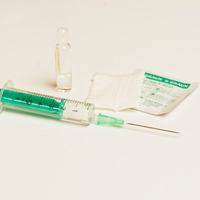It’s long-term, well it’s for life basically: Understanding and exploring the burden of immunoglobulin treatment in patients with primary immunodeficiency disorders

All claims expressed in this article are solely those of the authors and do not necessarily represent those of their affiliated organizations, or those of the publisher, the editors and the reviewers. Any product that may be evaluated in this article or claim that may be made by its manufacturer is not guaranteed or endorsed by the publisher.
Authors
This paper describes the burden of receiving immunoglobulin (Ig) treatment from the perspective of patients diagnosed with a Primary Immunodeficiency (PID). Thirty semi-structured interviews with patients receiving intravenous (n=21) and subcutaneous immunoglobulin (n=9) therapy, either at home or in hospital were undertaken. Underpinned by a phenomenological theoretical framework, and using a qualitative, inductive thematic approach to prioritise patients’ concerns, we identified that Ig treatment requires considerable effort by the patient, particularly in relation to the amount of time, organization and planning that is needed. They also face numerous physical, social, relationship, emotional, role functioning, travelling, and financial challenges in their effort to undergo and maintain their infusions and care for their health. Some qualitative differences in treatment burden were noted between home and hospital settings which contributed to non-adherence to those regimes. Immunoglobulin treatment burden is complex and influenced by therapeutic mode and setting and the personal circumstances of the patient. As choice over treatment method appears to be mainly informed by lifestyle needs, PID patients may benefit from more information about these potential Ig lifestyle influences when selecting which form of treatment to take together with their health professional.
How to Cite
PAGEPress has chosen to apply the Creative Commons Attribution NonCommercial 4.0 International License (CC BY-NC 4.0) to all manuscripts to be published.

 https://doi.org/10.4081/qrmh.2020.9564
https://doi.org/10.4081/qrmh.2020.9564



